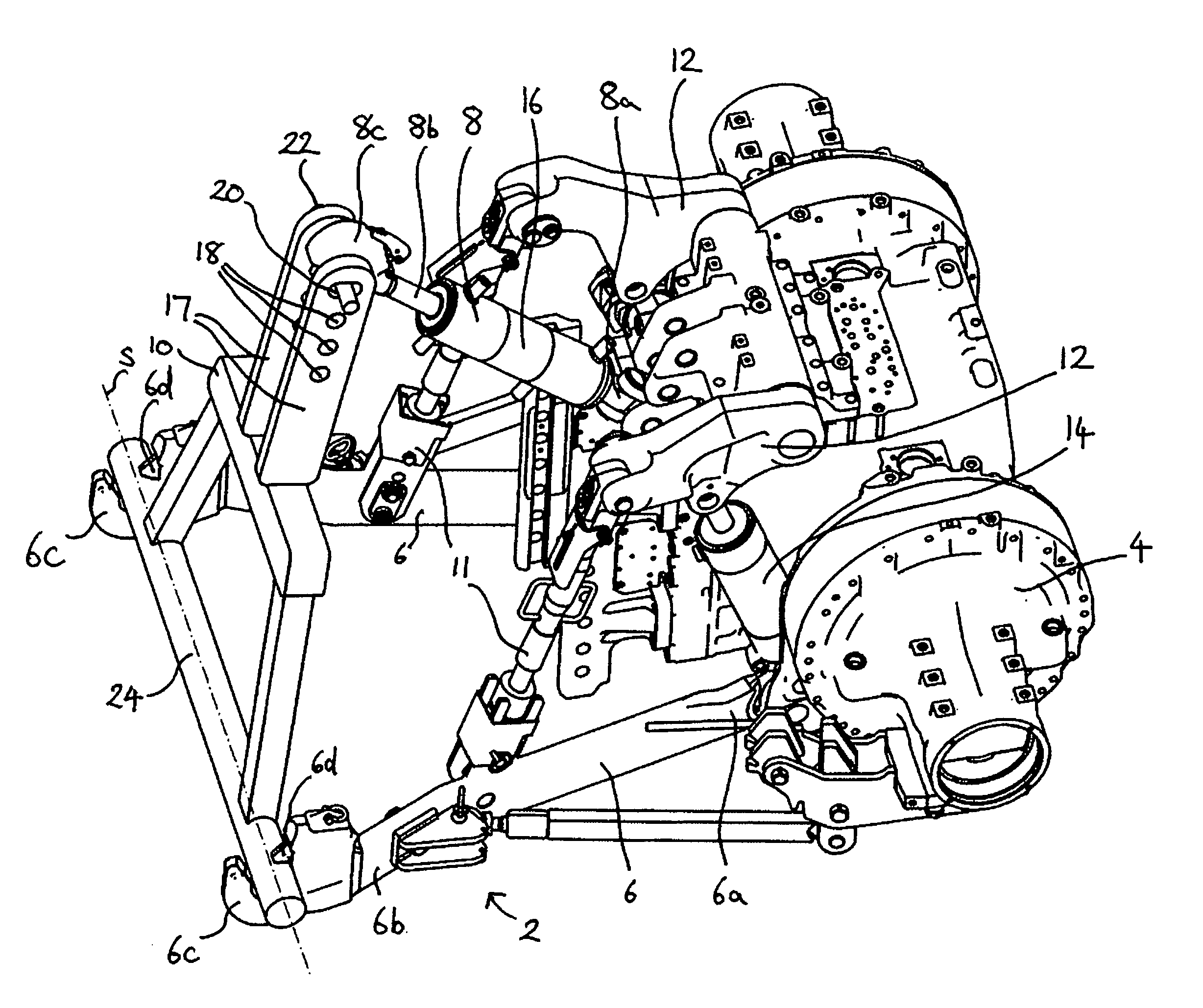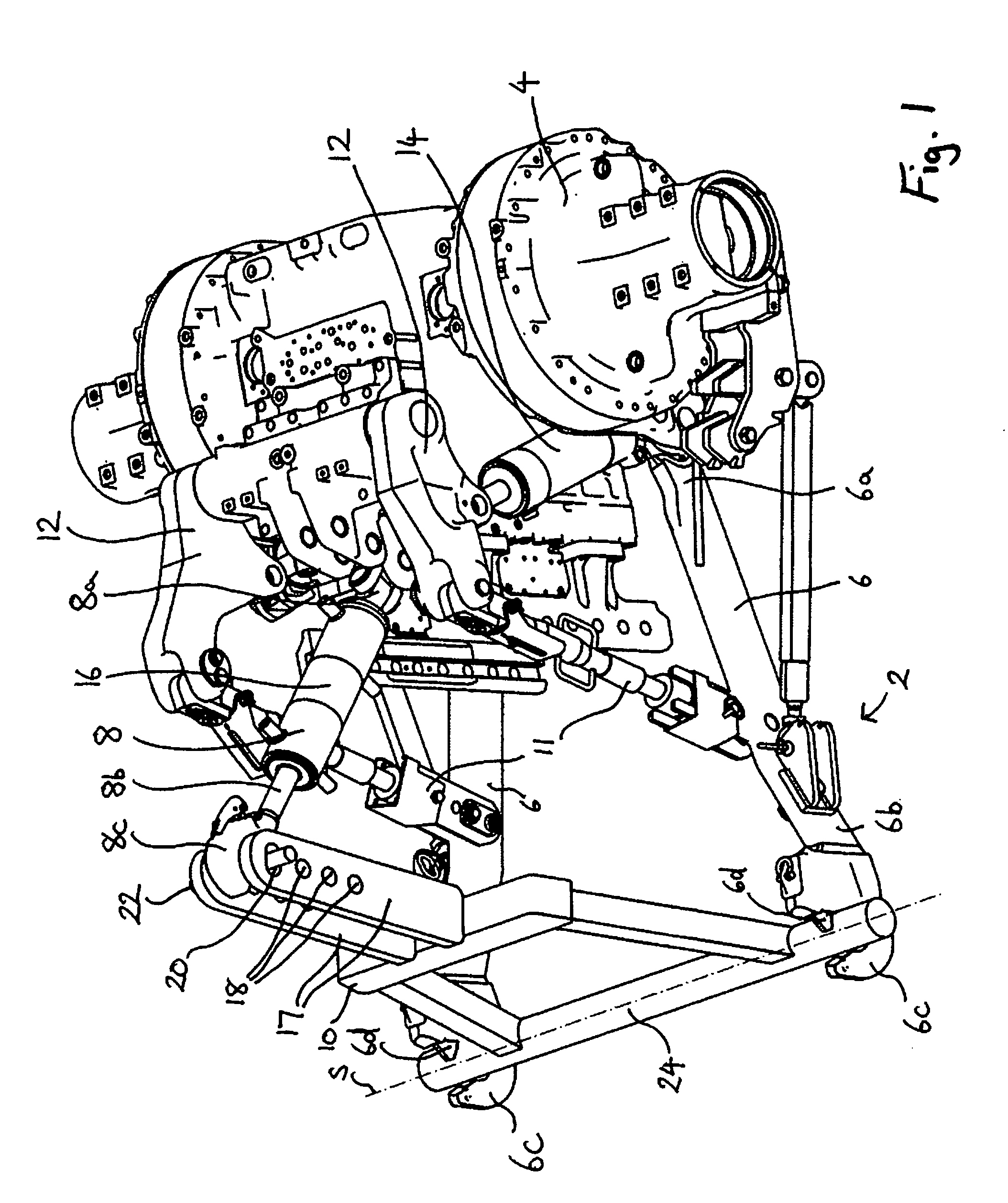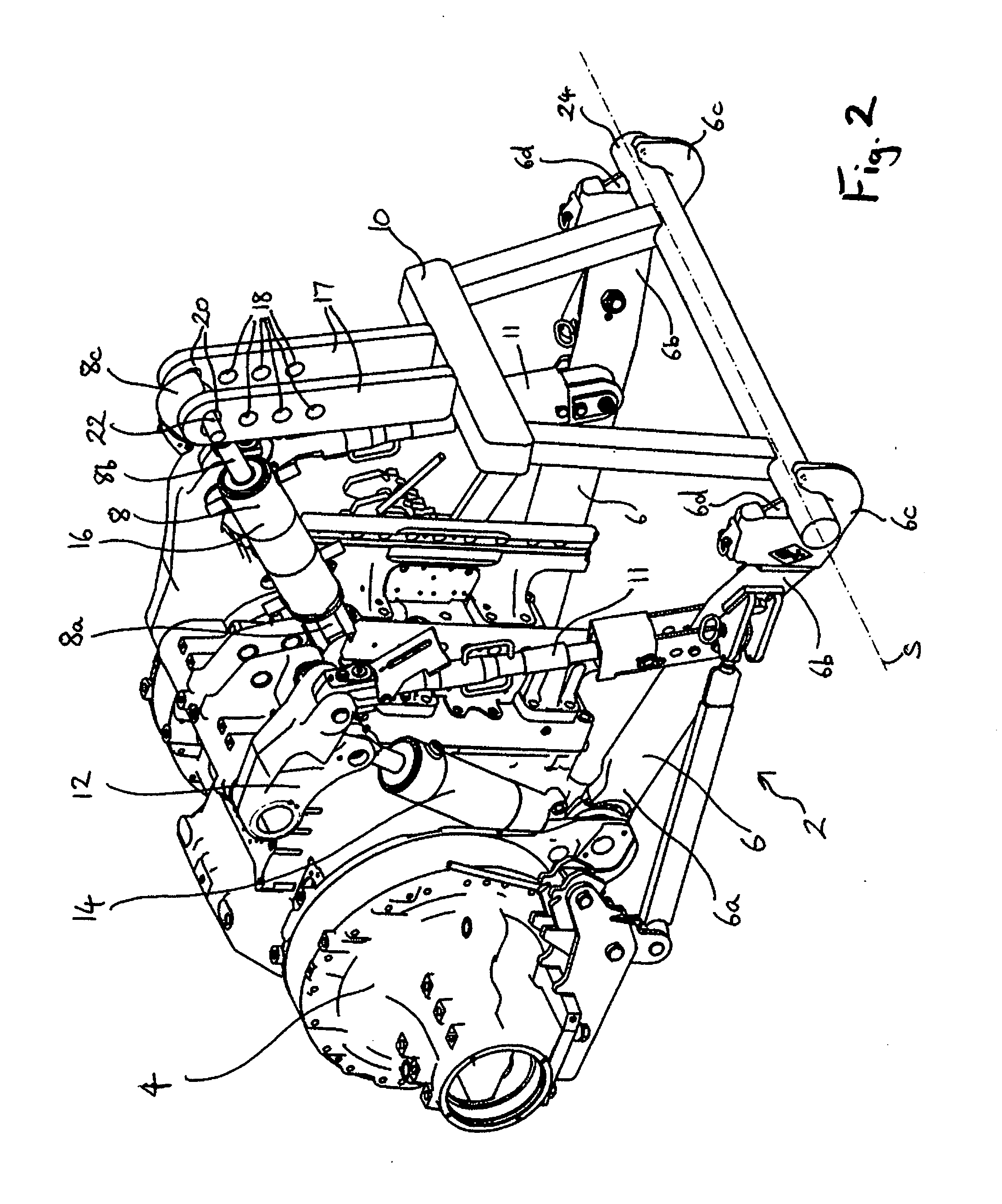[0024]As a result of the upper link according to the invention a change-over between a mode of operation with upper link float position and a mode of operation with rigid
coupling to the upper link can be done without the connection between the upper link and the tool-carrying frame having to be disengaged. Thus the implement does not have to be demounted specially for this. A further
advantage of the present invention lies in the fact that the float position of the upper link can be provided on the side of the utility vehicle and thus independently of the attached implement. Furthermore it is not necessary to provide an elongated hole on the tool-carrying frame. Because the float position of the upper link is made available by corresponding design of the upper link itself, the drilled holes provided at different heights or parts elsewhere of the tool-carrying frame to be coupled can be used on the implement side. Therefore different coupling heights of the upper link can also be adjusted in the mode of operation with upper link float position. Furthermore greater movement distances of the
piston in the hydraulic cylinder can be made available in the mode of operation with upper link float position, depending on the design of the fluid tank compared to the prior art version with elongated hole.
[0025]Change-over to the upper link float position is done according to the present invention through coupling of the hydraulic cylinder to the fluid tank. Such a coupling can be comfortably controlled from the driver's seat of the utility vehicle. In particular valves, which bring about coupling of the fluid tank to the hydraulic cylinder, with a suitably laid-out configuration, can be manually reached and adjusted from the driver's seat of the vehicle. Furthermore it is possible to operate such valves electrically by means of actuating devices, which are located in the vehicle cab. Accordingly it is not necessary for the driver to leave the vehicle in order to switch on the upper link float position or to switch off the upper link float position.
[0026]According to the invention the hydraulic cylinder is coupled to the fluid tank so that in the coupled condition
hydraulic fluid limited to a pre-determined volume can be exchanged between the hydraulic cylinder and the fluid tank. In the case of a single action hydraulic cylinder this means that a pre-determined volume of
hydraulic fluid can flow out or in from the
piston chamber of the hydraulic cylinder. Under consideration of the
diameter of the piston chamber of the hydraulic cylinder the pre-determined volume corresponds to a certain distance or a certain
stroke of the piston in the hydraulic cylinder. In the case of a double action hydraulic cylinder, when a certain volume of hydraulic fluid flows out from a first piston chamber, a hydraulic
fluid volume corresponding to the aforesaid volume must flow into the second piston chamber, in order to make it possible for the piston to be moved in floating fashion, corresponding to the volume exchanged.
Coupling to the fluid tank must follow accordingly. In the case of utility vehicles the hydraulic cylinder of the upper link is usually designed as a double action cylinder, in order to permit adjustment of the upper link in both directions by connecting with a power source.
[0027]According to a further advantageous embodiment of the invention provision is made for the coupling between the hydraulic cylinder and the fluid tank to be interrupted. Preferably the coupling and the interruption of the coupling are effected by means of a coupling valve arranged in a
fluid pipe between hydraulic cylinder and fluid tank. At the same time provision is made for the coupling valve to be arranged directly on the hydraulic cylinder and / or on the fluid tank. By interrupting the coupling the length setting of the hydraulic cylinder is locked and the upper link can be operated in the mode of operation with rigid coupling to the upper link. Therefore in the case of this further embodiment it is possible to simply change over between the two
modes of operation of an upper link float position and a rigid coupling to the upper link. The coupling and interruption are effected particularly simply through the coupling valve mentioned above, since depending on the position of the valve an exchange of hydraulic fluid between hydraulic cylinder and fluid tank can be permitted or prevented.
[0028]According to a further advantageous embodiment of the invention the hydraulic cylinder, for active adjustment of the same, can be connected to a power source of the utility vehicle. Preferably the power source is a
hydraulic pump. In contrast to the float position of the piston, which is obtained by coupling the hydraulic cylinder to the fluid tank, the piston is actively adjusted through the connection of the hydraulic cylinder to a power source as a result of
fluid pressure being applied to the piston. As a result, for example, the angle of the attached implement can be adjusted upwards and downwards and the implement can be raised after operation, e.g. for driving off the field. Preferably the connection and separation of the connection from the power source are brought about by a regulating valve arranged in a
fluid pipe between hydraulic cylinder and power source. As a result the upper link can be comfortably adjusted from the vehicle seat.
[0029]According to a further advantageous embodiment provision is made for the coupling valve and the regulating valve to be coupled together or operated in
unison with one another so that when the hydraulic cylinder is connected to the power source of the utility vehicle through the regulating valve the coupling between the hydraulic cylinder and the fluid tank is interrupted by the coupling valve. Thus it is possible, when the regulating valve is actuated, for adjustment of the upper link to be directly effected and not firstly hydraulic fluid having to be exchanged between the hydraulic cylinder and the fluid tank without adjustment of the upper link. Thus exact and rapid actuation of the upper link can be achieved.
 Login to View More
Login to View More  Login to View More
Login to View More 


